I like checking in on the Humble Bundle store every once in a while, sometimes there are amazing deals on things I’m interested in. Back in August/September one of these deals was on comics from 2000 AD. Already being a big fan of Judge Dredd, I knew that this was going to be a total steal so I decided to drop $20 for the tier 3 rewards and have been gorging myself on quality comics ever since (in fact, I’ve since gotten a monthly subscription to 2000 AD to stay on top of their ongoing storylines). After getting a few volumes in I decided that I wanted to document my feelings on these stories, since I don’t really have anyone else to talk to about these things and I have thoughts, dammit! So, without further adieu, let’s get into it…
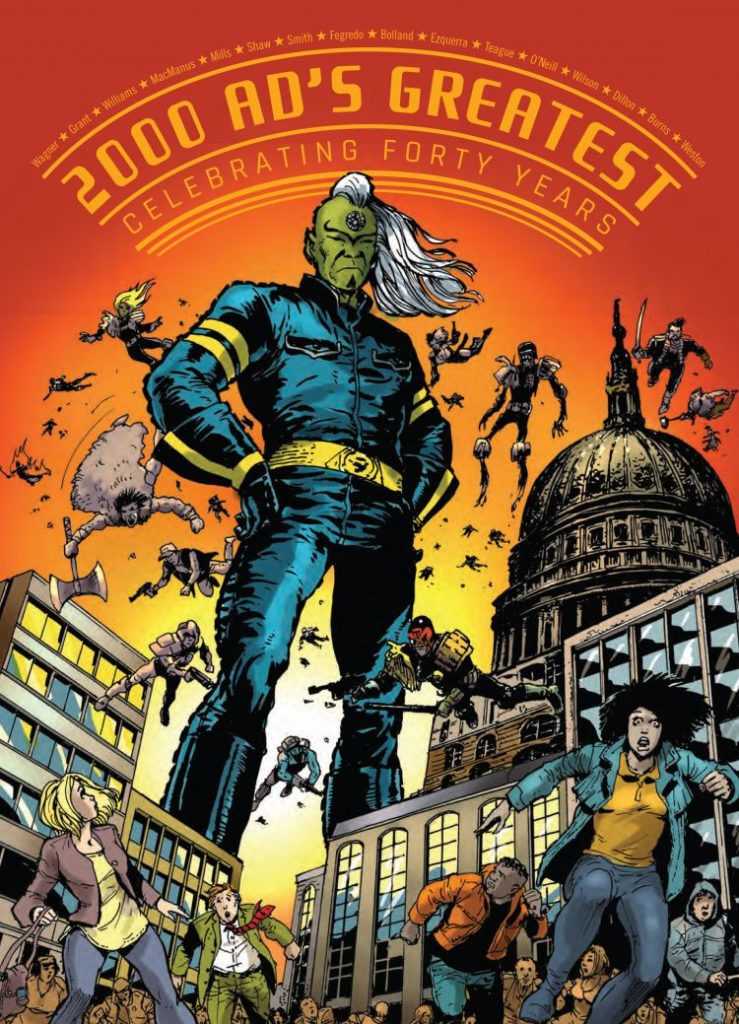
2000 AD‘s Greatest: Celebrating 40 Years of Thrill-Power!
If you were looking for an introduction to 2000 AD then this collection is the perfect primer. It features several short stories from the publication’s long history, many of which I would agree are among the absolute best of 2000 AD. “Meat” is a particular highlight (which you can read in its entirety on 2000 AD‘s preview page!), with fantastic writing and art which shows off just how brutal the world of Mega-City One is. “The Forever Crimes” is similarly grim, but it is also a very early comic in the publication’s history, so it’s interesting to see just how much the comic medium has evolved in the past 40 years. Also worth highlighting is “The Heart is a Lonely Klegg Hunter”, one of the funniest comics I’ve ever read. Simply put, if you’re curious about getting into the stories of 2000 AD, then this is an ideal starting point.
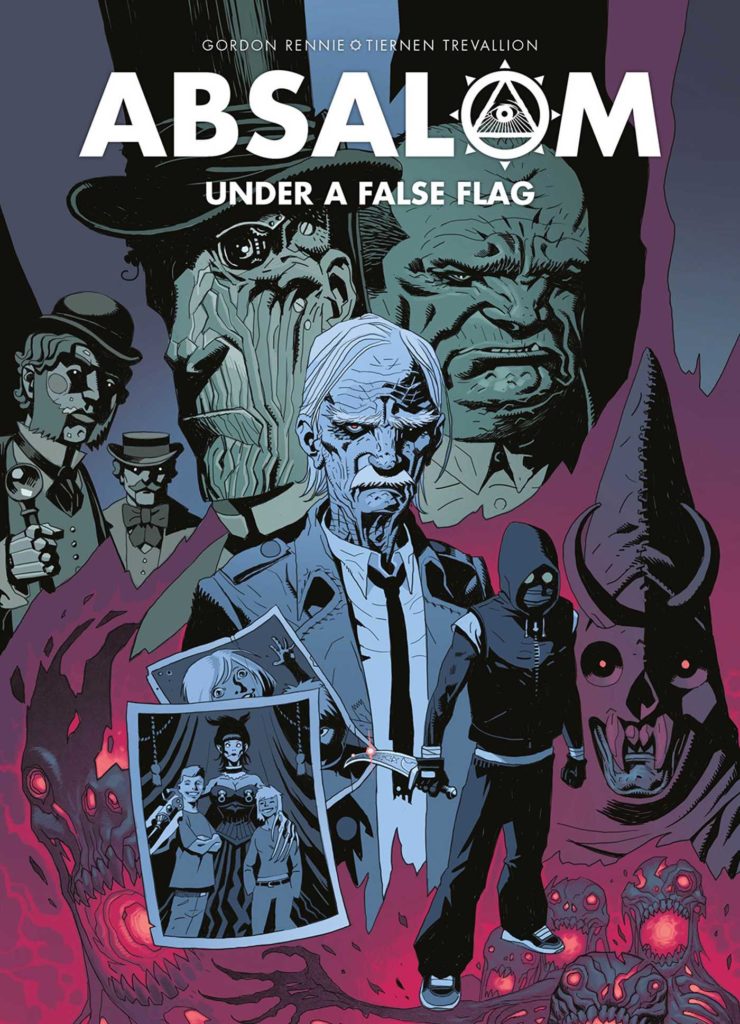
Absalom
Absalom was a real treat – the three volumes included in the bundle would have been worth the $20 that I paid alone. Set in a world where the English nobility made a secret pact with the forces of hell, the story follows a cantankerous investigator named Harry Absalom who secretly upholds the laws of The Accord and slays demons who break it. The main thrust of the story revolves around Absalom’s attempts to get a team together in order to break into the demons’ realm in order to save his kidnapped grandchildren. Absalom succeeds thanks to Gordon Rennie’s entertaining writing and Tiernan Trevallion’s distinctive and evocative art style. The characters are particularly great, from the titular Harry Absalom, to the lawful-evil Guv, to the cyborg demon servant Mr. Critch. The world itself is also fascinating, creating a rich world with distinctive elements (especially the freaking steampunk demons) and the story moves at a good clip. My only complaints are that it can be a bit difficult to follow the story at times, because Rennie will often drop you right into the narrative with little explanation (necessitating multiple readings to really appreciate), and that the story feels like it wasn’t explored to its fullest. In a foreword, Gordon Rennie says that he doesn’t like to stretch a story out beyond the character’s natural arc and in that way it succeeds, but there are so many more stories that could be told in this world beyond Harry Absalom himself. In addition, several plot-beats feel under-utilized. Still, Absalom is a great read and well-worth picking up, especially if you’re into the paranormal and steampunk stories!
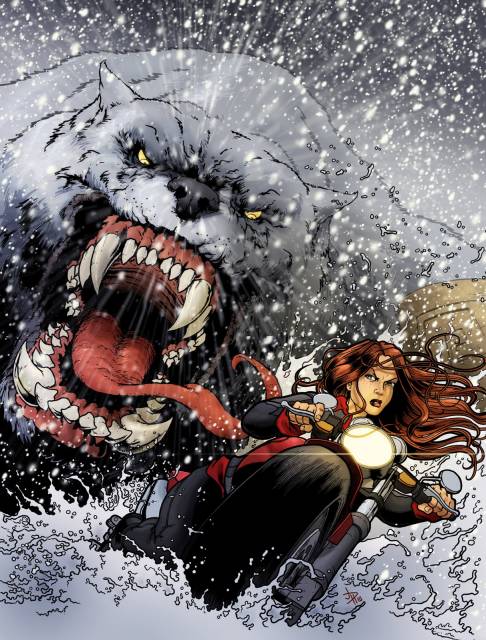
Age of the Wolf
Oh shit, a story about a werewolf apocalypse featuring a badass, redhead female protagonist? You’ve got my attention, Alec Worley and John Davis-Hunt. Unsurprisingly, Age of the Wolf is a really fun read, featuring plenty of werewolf carnage and magical elements ripped directly from Norse mythology. The first two parts follow a fairly typical apocalyptic/post-apocalyptic storyline, with protagonist Rowan discovering how to use Nordic rune magic to fight back against the werewolves and various evil humans. The third part though… hoo boy, the third part makes the strange decision of having the werewolves evolve from mindless beasts into… furries. It’s a weird turn to say the least and I’m still not sure if it was brilliant or terrible.
The main issue though is that Age of the Wolf doesn’t explore its intriguing world nearly enough, nor does it have a lot of time to give its characters much personality. Rowan is the only character which gets any sort of development, but even she has her issues. In the foreward, Alec Worley states that he doesn’t like “strong female characters” and instead believes that we need “interesting characters” instead. However, I feel like Rowan falls on the “strong female character” side of things, as she is mainly defined by her strength rather than any sorts of conflict or development (this becomes especially notable as we get further on in this Humble Bundle and meet several much better-written and more interesting female characters). While I agree with Alec Worely that the trend of “strong female characters” is a problem, I feel like the solution is ultimately just to have more women writers and artists within the comics industry. In a lot of ways, Rowan feels like a man’s ideal woman moreso than a truly compelling female character in her own right.
The plot also zips along in unsatisfying ways, feeling like Worley and Davis-Hunt were constrained by a tight page limit to tell their story. For example, a Nazi kills Rowan’s lover and throws her into a pit of werewolves and she swears bloody vengeance against him. That’s the sort of set-up that drives entire narratives, but here it only takes like a page before she escapes the pit and then a couple more before she tracks him down and kills him. Being limited to under 150 pages to tell the entire beginning and end of the werewolf apocalypse is quite restrictive and leaves tons of unexplored territory. Don’t get me wrong, Age of the Wolf is a fun read, even one I’d give a tepid recommendation to read, but could have been a lot better.
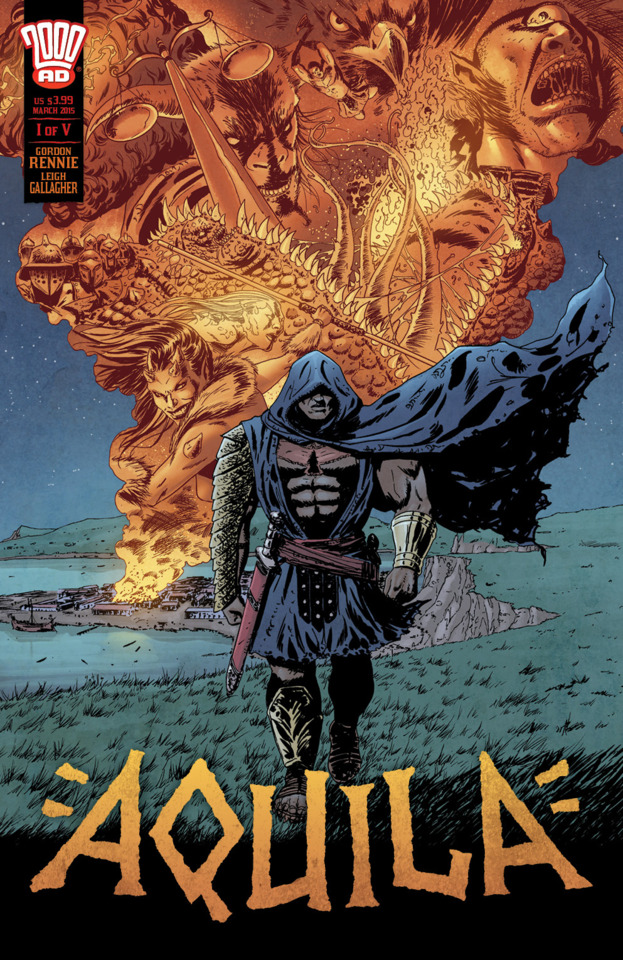
Aquila
Gordon Rennie makes his second appearance on this list with Aquila, a comic series which follows a Roman slave who was crucified for partaking in Spartacus’ rebellion. Dying, he calls out for any god to spare his life, and a bloodthirsty deity known as The Devourer answers, granting him boons by which he can slay the wicked. Aquila is notable in part due to its unique Roman historical-fantasy setting, which sets it apart from anything else in 2000 AD‘s catalogue. The story plays out like a grimdark Forrest Gump as Aquila encounters contemporaries such as Boudicca, Saint Peter and Nero, while also shaping the course of history as we know it. Aquila himself isn’t particularly compelling, but the story is entertaining and very well-suited for episodic adventure. If you’re into history then you will probably find Aquila interesting, as it is fun to see just how it stitches events together with its more fantastical elements. It doesn’t break new ground, but I really enjoyed Aquila, it gets another hearty recommendation from me.
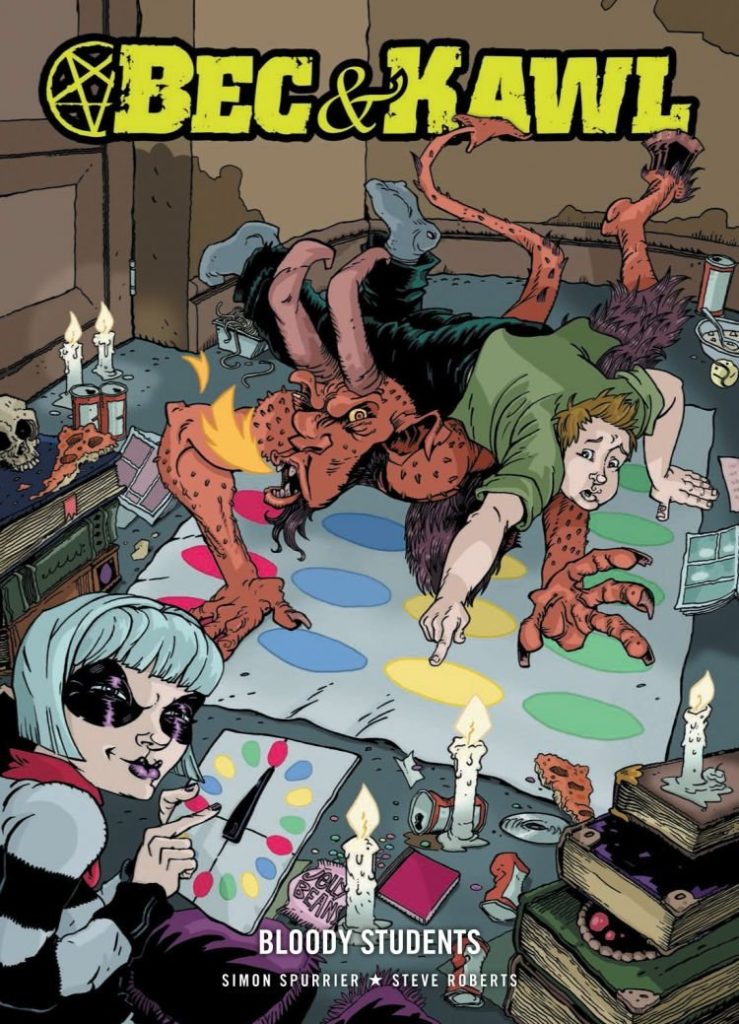
Bec & Kawl
Bec & Kawl is the first book in this collection that I’m a bit “meh” on. It follows the titular Bec and Kawl as they get into supernatural mishaps, usually through their own stupidity (for example, in the first story they summon a demon to intimidate Bec’s college professor into giving her a better grade). The stories are drenched in irreverent, tongue-in-cheek humour (and are often straight-up stupid). I found the constant pop culture references in the first few stories to be grating and dated, these feel very much like a product of the mid-2000s (hell, they remind me of shit that I was writing at that time, in a bad way). Special shout-out to the tooth fairy storyline for being extra insufferable with its forced pop culture references. Luckily, the stories get a bit better as it goes along and as Bec and Kawls’ characters are better-defined. There’s something endearing about Bec’s psychotic narcissism and Kawl’s slacker stupidity which makes their misadventures entertaining even if the stories themselves aren’t particularly compelling.
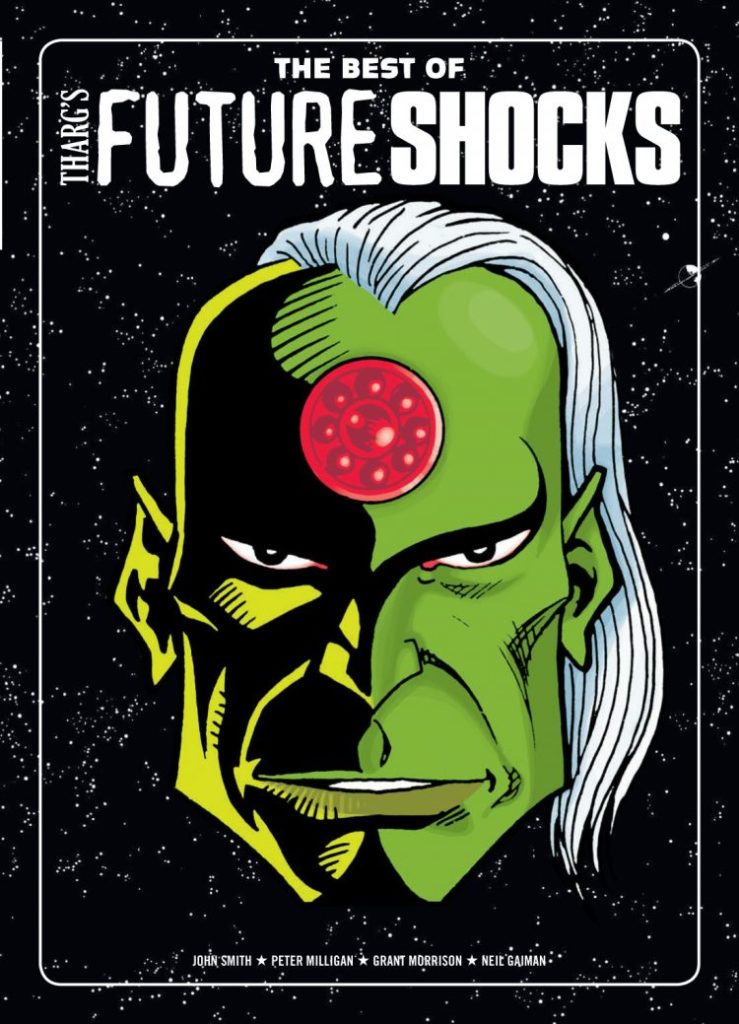
The Best of Tharg’s Future Shocks
Tharg’s Future Shocks is a long-running, stand-alone, short story anthology which has been running in 2000 AD for decades now. Naturally, The Best of Tharg’s Future Shocks collects several of these stories into one big collection. All of the “Future Shocks” are sci-fi, Twilight Zone-esque stories, featuring some sort of twist in the final panel. By their nature, Future Shocks are simple, disposable and (given their structure) a bit predictable, but they’re still fun. Trying to guess the twists can be an enjoyable activity in itself, and I found myself even trying to come up with my own “Future Shock” stories because the formula is so simple and structured. The Best of Tharg’s Future Shocks is a fun, pulpy collection, but I’d say it’s one of the more inessential books in the bundle.

Brass Sun
Oh hey, it’s a series by IC2S veteran Ian Edginton (last seen during the Dead Space EU Love/Hate)! Edginton had taken over as the writer for Dead Space: Liberation, which made me wonder if the action-heavy narrative shift in that comic was on him or EA. Well, having read Brass Sun I’m confident that any shortcomings in Dead Space: Liberation were down to EA’s interference, because Brass Sun is easily one of my favourite books in this collection. Brass Sun is clearly an excuse for Edginton to go wild with creative worldbuilding ideas. Here he crafts a steampunk adventure story set in a unique, clockwork solar system. The plot itself is a very standard hero’s journey – chosen one protagonist Wren has to find pieces of a nebulous key to restart the sun and save the entire clockwork solar system. The narrative bears more than a little resemblance to modern concerns about climate change, which gives it a bit more resonance. The imagination on display and the unique worlds that we experience make Brass Sun an enthralling adventure, although Wren isn’t a particularly compelling protagonist in her own right. That said, my only real complaint is that the whole story isn’t out yet, this is only the first volume. You know I’m going to be hunting down issues of 2000AD to find the next chapter!
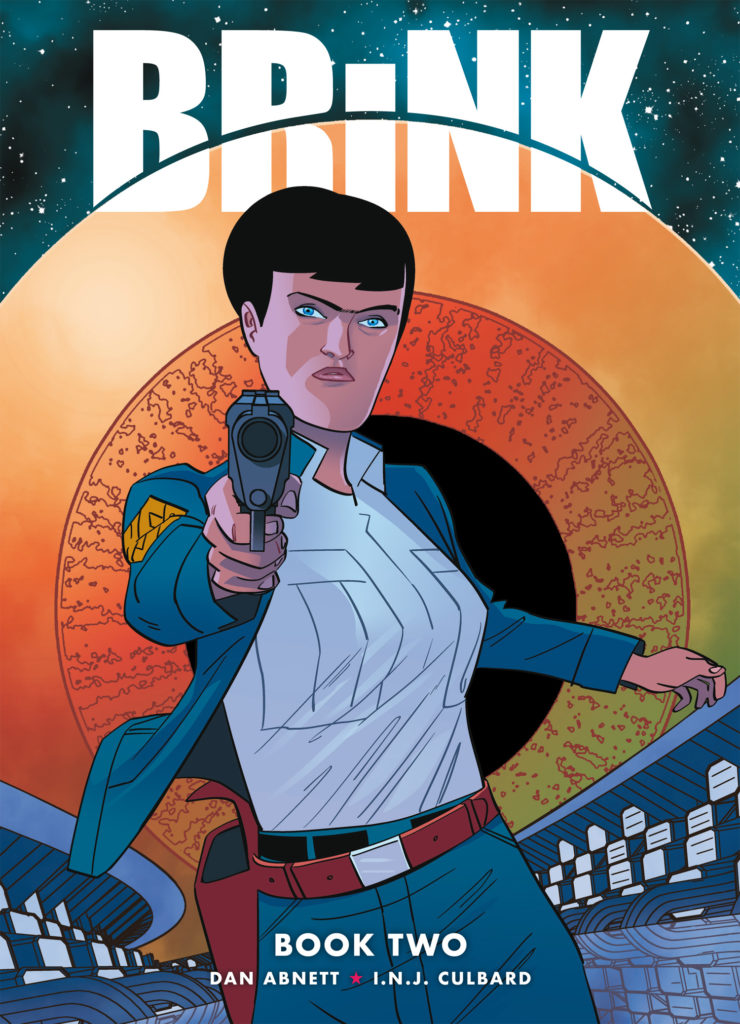
Brink
Holy shit, Dan Abnett! As a long-time Warhammer 40,000 fan, seeing his name always fills me with excitement (Prospero Burns is, in my opinion, a legitimately great novel, especially considering that Black Library novels tend to be little more than bolter porn). Not only did Brink not disappoint, but it even surprised me in several ways. First of all, it draws attention for its protagonist, Bridget Kurtis, who is a wildly unconventional female character (I mean… just look at her, she clearly isn’t Abnett’s imaginary girlfriend). She’s great and has a no-nonsense attitude which gets her through plenty of scrapes. Speaking of which, Brink‘s story revolves around Bridget Kurtis’ investigations into cult activity on various “habitats” – corporate-owned space stations which hold the remnants of humanity after the evacuation of Earth after it is rendered inhabitable. The setting is very rich with themes and parallels to reality as well, such as the dangers (and short-sightedness) of unregulated capitalism, religious fanaticism, wealth inequality, and facing ecological disaster. Abnett’s writing is solid, focusing on character and story over non-stop action (a trap many similar serialized stories fall into), and Culbard’s art compliments it well, being strikingly, grotesquely beautiful at times. The Humble Bundle came with all three currently-released volumes of Brink, with more potentially coming in future. I’d definitely recommend picking them up, I know that I’ll be eagerly scanning 2000AD for future installments!
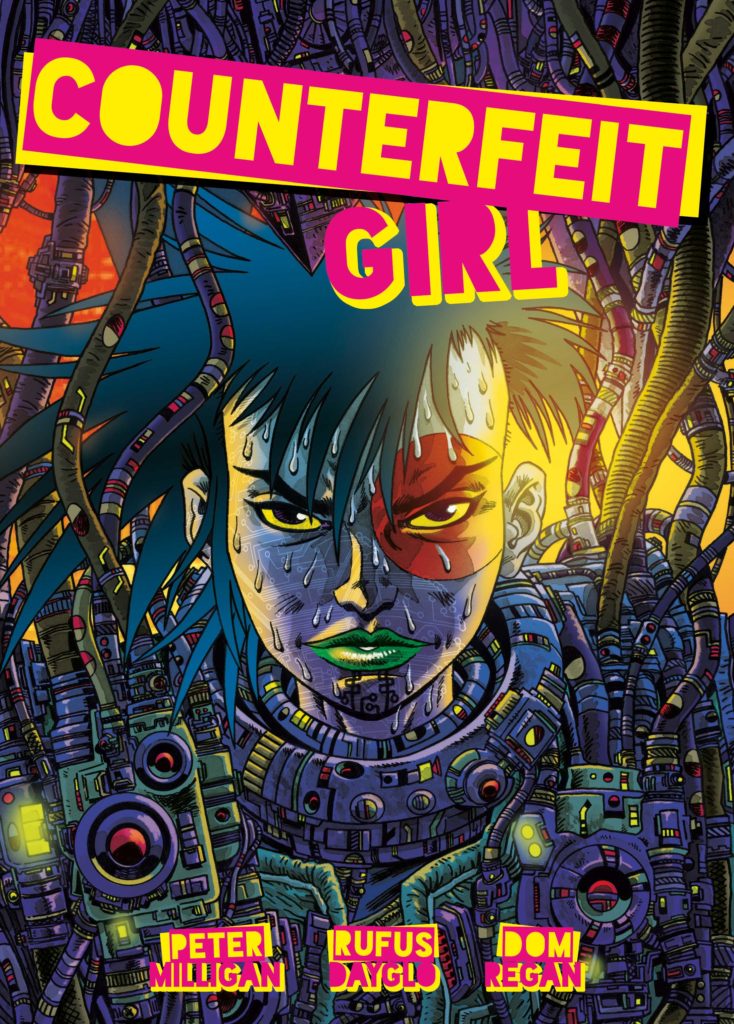
Counterfeit Girl
Counterfeit Girl is one of the shortest books in this collection at a mere 68 pages and doesn’t feel like only the first volume in an ongoing series. That said, what the story lacks in length it makes up for in personality. Counterfeit Girl is drenched in cyberpunk style and philosophy, raising questions of identity in a world where personas can be downloaded and stolen at a moment’s notice. The titular “counterfeit girl”, Libra, navigates the underbelly of a pulpy, dystopian sci-fi society as she tries to bring down the villainous Albion Corporation. Rufus Dayglo’s art really enhances the punk themes as well (appropriately, he is one of the artists responsible for Tank Girl). All-in-all, Counterfeit Girl isn’t exactly breaking new ground (its themes of identity are very well-trodden territory for cyberpunk narratives, especially by 2016), but it’s still an enjoyable, breezy sci-fi tale that’s worth diving into on a lunch break.

Defoe 1666
Defoe 1666 is a bit like Absalom meets Aquila – a grimdark, historical fantasy, proto-steampunk story about a fanatic who hunts zombies after an infernal disaster resurrects the dead in 1666 during the Great Fire of London. While the story itself is entertaining and engaging (although it can be told in a confusing manner at times), the main draw is the amount of research which has gone into its creative arsenal. Basically every wild, zombie-killing invention in the story was designed and/or prototyped during the time period, from the multi-barreled shotguns, to the Renaissance-era tanks, to the square bullets designed to kill infidels (as opposed to the circular bullets for Christians). The art is also worth highlighting, being strictly black and white and with very gritty, grimy lines bringing this dangerous world to life. It’s also worth noting that the Humble Bundle only has volume one of the story, but there’s a second volume available on the 2000AD store. As is, volume one feels very much like a first act, but I liked it enough that I’m definitely going to purchase volume two to find out what happens next, so you can’t get much more of an endorsement than that.
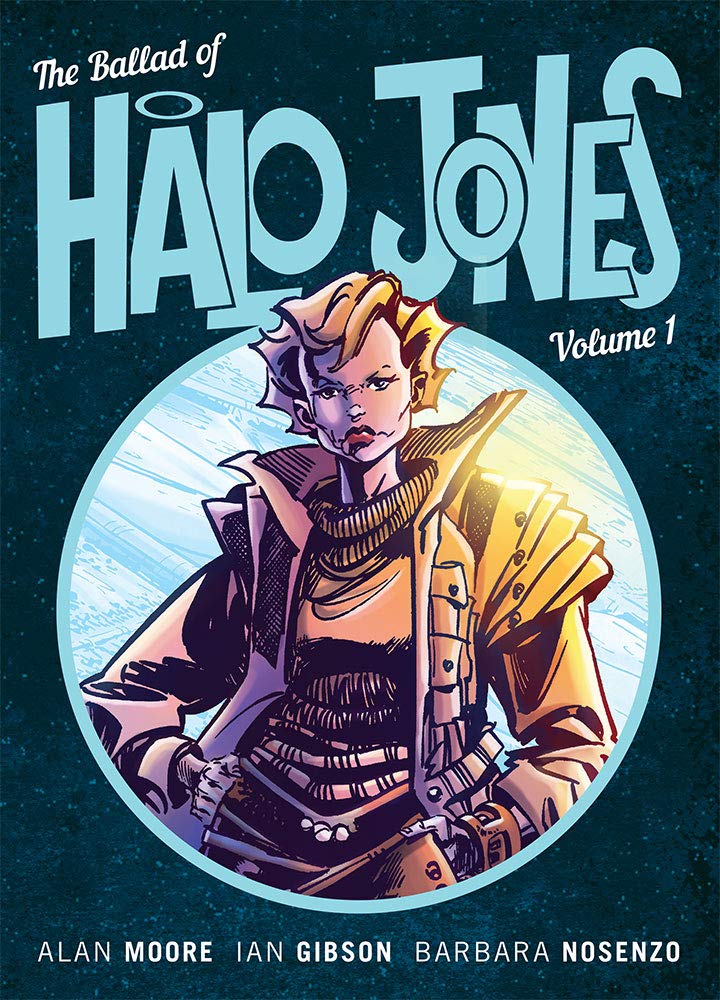
The Ballad of Halo Jones
I figured that Halo Jones was going to be good just because it was written by Alan freaking Moore, but I really wasn’t expecting just how much I was going to love it. At the beating heart of the story is Halo Jones herself, who is remarkable as a comic book heroine in that she really isn’t that remarkable at all. She’s an everywoman who isn’t particularly good at anything, but who does what she can to survive in an uncaring galaxy while desperately dreaming of a way to escape the confines of her life. In the process, Alan Moore and Ian Gibson slowly introduce us to a universe which is rich and intriguing, while also being pulpy fun at the same time. The Humble Bundle collects three volumes of this classic tale and I definitely recommend reading them all – it’s so well-written and unconventional (the conflict in volume one literally revolves around navigating traffic!) and there are so many heartbreaking moments throughout.
My only have a couple of niggling complaints about Halo Jones. Bolume one drops you right into the universe and it’s not until the very beginning of volume two that they bother to explain all the intricacies of Halo’s home, The Hoop… and by then it’s kind of pointless because she’s already left it. Honestly, this information should have just been appended to the start of volume one. Another minor issue is that Ian Gibson is clearly an ass-man because he loads the panels with womens’ shapely asses every chance he gets. Again, it’s not exactly a major problem but it kind of undermines the story’s efforts to elevate women. And finally, the most galling problem about Halo Jones – it was never finished. In classic Alan Moore style, he lost the rights to his characters to the publisher of 2000AD at the time and then never finished the story as a result. Moore himself has said that he wanted at least three more volumes and as a result the story is clearly incomplete. I was devastated when I realized that I couldn’t continue the story, which is both something worth knowing going in and a testament to how good this story is.
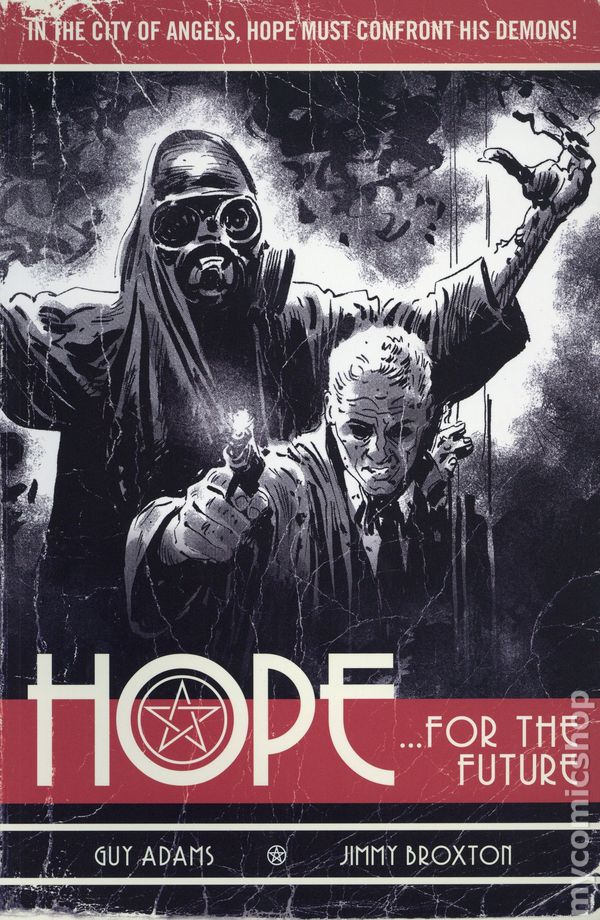
Hope… For the Future
Hope is definitely one of the more “meh” inclusions in the Humble Bundle. While the idea of a magical detective with a demon companion is cool, the actual story fails to do much to excite. For one thing, that demon companion? Completely silent the entire time, so you don’t even get any fun banter. Instead, we just get Hope himself, who is about as generic a hardboiled detective as you could possibly ask for. And the case that makes up this story? Also very cliché for a supernatural detective story, even down to Hope’s primary motivation being that his son was kidnapped by demonic forces. Unlike most of the stories in this collection, I can’t say I’d even bother to find out if there are any other volumes available, let alone spend money on them. I’ll probably check new issues of Hope out in 2000AD if they show up and maybe I’ll grow more interested as the story goes, but as is I was unimpressed by Hope.
And that’s it for part one of this rundown of the 2000AD Humble Bundle! Tune in again soon when we take a look at the books in part two (after, y’know, I get a chance to read through them all)!